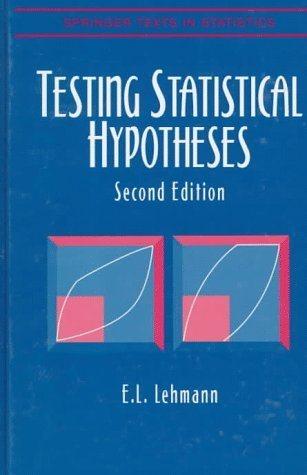27. In the three-factor situation of the preceding problem, suppose that a = b = m. The...
Question:
27. In the three-factor situation of the preceding problem, suppose that a = b = m. The hypothesis H can then be tested on the basis of m2 observations as follows. At each pair of levels (i, j) of the first two factors one observation is taken, to which we refer as being in the i th row and the j th column. If the levels of the third factor are chosen in such a way that each of them occurs once and only once in each row and column, the experimental design is a Latin square. The m2 observations are denoted by X;j(kl' where the third subscript indicates the level of the third factor when the first two are at levels i and j. It is assumed that E(X;j(k) = ;j(k) = II- + a; + Pj + Yk' with Ea; = EPj = EYk = 0. (i) The parameters are determined from the 's through the equations ~;'(') = II- + a;, t j ( . ) = II- + ~, ~"(k) = II- + Yk' ..(.)=II-.
(Summation over j with i held fixed automatically causes summation also over k .) (ii) The least-squares estimates of the parameters may be obtained from the identity [[[X;j(k) - ~;j(k,]2 ; j = m[[x;O(') - x ••(o) - a;f + m[[x.j(O) - x oo(.) _ pj l 2 +m[[Xo'(k) - xo.(o) - rd2 + m2[x.O(0) - ILf +[[[X;j(k) - x;o(.) - xOj(o) - X"(k) + 2x••(.)]2. i k (iii) For testing the hypothesis H: al = ... = am = 0, the test statistic W· of (15) is m[ [X;O(O) - X••(.)]2 2 • [[[X;j(k) - X;.(o) - X.j(.) - X"(k) + 2X••(.)] /( m - 2) The degrees of freedom are m - 1 for the numerator and (m - 1)(m - 2) for the denominator, and the noncentrality parameter is ",2 = mEa;/0 2.
Step by Step Answer:







